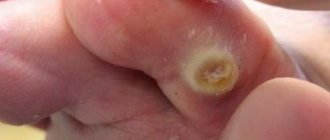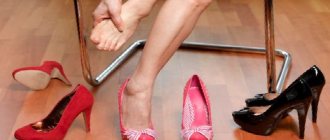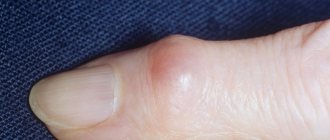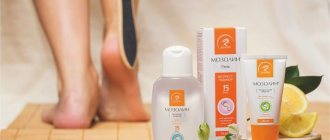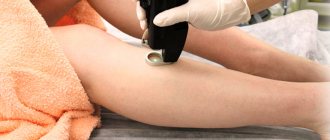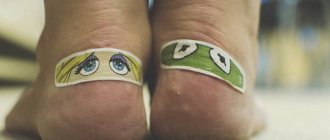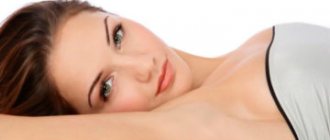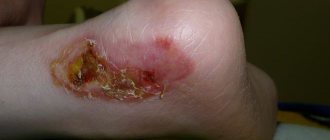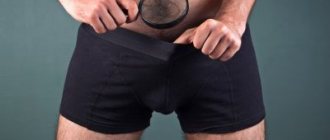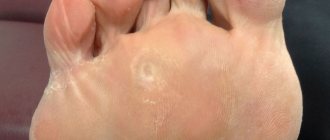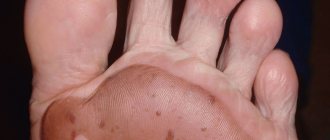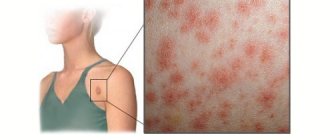It is generally accepted that a callus is an area of skin in which excessive keratinization of the skin has occurred under the influence of friction, pressure or other mechanical factors. Thus, callus is the result of protective, adaptive reactions arising from injury.
It is generally accepted that the primary location of calluses is on the surface of the feet, between the toes, especially the big and index toes, on the heels. If we take the surface of the foot, calluses are present mainly on the balls of the feet. Feet are susceptible to the formation of calluses, people spend most of their lives on their feet or in motion, and shoes are often uncomfortable. Excess weight plays an important role, worsening the condition by increasing the load on the legs.
Calluses: Common Risk Factors
The immediate cause of calluses is mechanical friction to which the skin is exposed.
However, some people develop hyperkeratosis and others do not.
The reason for this is external and internal factors that affect the risk of calluses.
Common factors include:
- age
- floor
- body mass
With age, the risk of hyperkeratosis increases.
In men, the peak incidence is 50-60 years, and in women – 60-70 years.
This is due to age-related skin changes.
They are as follows:
- dehydration of the epidermis
- reduction in the thickness of subcutaneous fat
- epithelial cells become flatter
- other dermatological diseases are added that make the skin more vulnerable to mechanical stress
As you age, your skin becomes tougher.
It is less elastic and not as resistant to stretching.
The most statistically significant correlation between the risk of callus formation and age is observed in diabetics.
It is also known that with age, the feet become flattened.
The height of the longitudinal arch decreases.
This changes the pressure that the body weight puts on different parts of the feet.
Gender influences the risk of developing calluses.
Statistics show that women with foot hyperkeratosis seek medical help higher than men.
The reasons for this phenomenon are not known.
Women have higher skin elasticity.
It would seem that the frequency of callus formation in them should be lower.
Some researchers have linked the higher incidence of hyperkeratosis in females to shoe preferences.
Men primarily choose convenience over design.
While women often wear uncomfortable shoes that rub their skin, just to look more attractive.
Diabetes mellitus affects the appearance of calluses in both men and women.
The risk of their formation increases.
In addition, diabetics are characterized by peculiarities in the localization of calluses.
They usually appear on the dorsum of the little toe or the plantar surface of the first (“big”) toe.
Another common risk factor for calluses is a person's body weight.
It has been reliably determined that the higher it is, the more often hyperkeratosis is formed.
Moreover, its main localization is the heel region.
It is the back of the foot that experiences increased stress in obesity.
To a lesser extent, it increases in the midfoot.
The fingers don't suffer at all.
Therefore, the frequency of callus formation here is the same as in people with normal weight.
Symptoms of calluses
The most common areas where calluses can form are on the soles and heels. Most often they occur due to incorrectly chosen shoes, as well as when wearing them. They appear not only in adults, but also in children.
- If you notice a small area of skin on your body that contains a small amount of liquid inside;
- Painful sensations;
- There is a burning sensation in the place where the rubbing occurred, and it is impossible to put on any shoes.
External risk factors for callus formation
Some external factors influence the likelihood of calluses.
These primarily include:
- physical activity
- shoes
- foot support
The influence of the level of physical activity on the risk of hyperkeratosis formation is beyond doubt.
Athletes develop calluses much more often than the average population.
Including more often than in older people with low levels of physical activity.
The reasons for this are obvious: when playing sports, a person often puts stress on his legs.
The result of friction on the skin of the feet is calluses.
In older patients, research shows there is a direct correlation between the risk of developing dry calluses on the feet and the amount of time they spend on their feet.
Certain types of physical activity lead to the appearance of calluses on certain parts of the body.
In runners, they often form in the area of the metatarsal head.
These areas of hyperkeratosis can be quite painful.
They are difficult to treat.
Calluses always recur with continued physical training.
Shoes are another factor that contributes to the appearance of calluses on the feet.
The discrepancy between the shape of the shoe and the foot leads to increased mechanical pressure on the skin.
To avoid the formation of hyperkeratosis, shoes should have a wide toe box.
Typically, tight shoes cause calluses on your toes.
But shoes that are too wide can also harm your feet.
In this case, calluses may be found in the heel area, as well as along the edge of the foot.
Wearing high-heeled shoes is also considered harmful.
This is one of the reasons for the formation of calluses in women.
The risk of their occurrence increases with a heel size of 2.5 cm or more.
In this case, calluses appear mainly in old age.
In youth, the risk of their formation is much lower.
Why do they appear on the legs and arms?
Calluses are thickenings of the human body that occur when it rubs against various objects. The development of a pathological condition can be observed against the background of exposure to various factors.
In most cases, formations appear on the feet due to improperly selected shoes. In women, the appearance of formations can be observed when constantly walking in high heels.
In most cases, calluses appear in people who do not wear socks. If a person constantly walks barefoot, this leads to roughening of the skin and the formation of calluses. With increased loads on the legs, growths appear quite often.
People who develop bursitis on their big toe are at risk of developing pathology. Against the background of this disease, increased friction of the skin is observed, which becomes the cause of formation.
Calluses on the hands occur when performing various types of work with hand tools without gloves.
Calluses can only occur due to an incorrect lifestyle. That is why a person is recommended to be as attentive as possible to his health.
Types of calluses are listed in this video:
Types of calluses
There are a large number of varieties of growths. People have the following formations:
- Dry. In appearance they resemble a hard tubercle on the epithelial surface. At the site of the callus, thickening and roughening of the skin is observed. Sometimes peeling of the epithelium is observed. In the area of formation, the skin is similar to wax. During the period of appearance of this formation, patients complain of pain that is observed under the skin. Even if the patient does not have pain, it is recommended to treat the growth.
For this purpose, it is recommended to carry out baths with a warm solution of potassium permanganate. This component can be replaced with soap, soda, tea tree oil. - Wet. These are bubbles of various sizes that are filled with liquid. Against the background of constant friction, the top layer of the skin peels off and the cavity fills with liquid. This growth is characterized by severe pain. Removing the top layer of skin will result in a weeping wound. This type of callus is quite dangerous. If, after a blister ruptures, it is not properly treated, this can lead to the formation of an infectious process. It is strictly forbidden to pierce the callus on your own. If the growth bursts on its own, it is recommended to disinfect it without fail.
- Bloody. If strong and prolonged friction is observed in the same place, this leads to damage to deeper vessels and formations. This is a cavity that is filled with blood. Treatment of the pathological condition consists of draining fluid from the callus and treating the wound with an anti-inflammatory solution.
- White. These are blisters that are quite small in size and filled with lymph. Diagnosed due to prolonged wearing of uncomfortable shoes. To treat the pathology, liquid is released from the bladder using a disinfected needle. After disinfecting the puncture site, it is recommended to apply ointment, which has an anti-inflammatory effect.
- Nails. This is a type of rod growths that are quite rare. In appearance, the growth looks like a nail, the head of which protrudes above the skin. The growth is characterized by small round shapes.
- Rod.
These growths are characterized by a special structure. The skin at the site of formation thickens. Beneath it there is a root that goes deep into the tissue, which leads to severe pain. Treatment of pathology can only be carried out in a hospital using hardware or surgical methods. In most cases, calluses are treated by drilling. Cryotherapy can also be used. This method involves freezing the callus, which falls off on its own. Laser treatment is quite effective in this case. - Corns. In appearance, these formations are similar to dry calluses. Their location is the feet. The formations are characterized by the absence of limiting boundaries and varied sizes. A pathological process occurs due to excessive dry skin, wearing uncomfortable shoes, etc.
- Cones. They appear as thickening. Observed on the big toes of the lower extremities. The development of a pathological process can be diagnosed due to heredity or wearing uncomfortable shoes. With regular mechanical impact on the callus, the development of a bunion can be observed. This growth is characterized by the presence of fluid in the cavity and causes severe pain.
- Outdated. These formations occur when growths are not treated in a timely manner and are characterized by the presence of keratinized skin. Calluses require fairly long-term treatment using medications with a softening effect. To eliminate calluses, it is recommended to make a bath based on soda and soap. Using this procedure, the top layer is softened, which will greatly simplify the process of removing the top layer. Next, salicylic ointment and a sterile bandage are applied to the wound.
- Root. They are characterized by a completely black color or may have black dots on the surface. These formations occur when wearing low-quality shoes or against the background of fungal diseases. Treatment of the pathological process is carried out with cryotherapy or laser method.
- Soft. The development of formations is observed in the presence of damaged water growths. To avoid an infectious process when this type of callus appears, it is recommended to carry out disinfection. It is recommended to treat the wound with antiseptic solutions. A bandage is applied to the site of the injury, which will eliminate the possibility of bacterial penetration.
- Purulent. If a white or red callus is not cured correctly, this leads to the formation of this type of pathology. Disinfection of formations is carried out with antibacterial drugs. It is also recommended to make compresses from aloe leaf or grated potatoes. Sometimes patients are prescribed antibiotic therapy.
- Infected.
These formations are a complication of purulent callus. During this pathological process, the diseased skin becomes excessively red and is characterized by severe pain. In this case, it is recommended to urgently consult a doctor. This is explained by the fact that if calluses are not treated correctly, the patient may have a limb amputated. - With a hole. This is a type of core callus, which is characterized by the presence of a hole in the center. To eliminate the formation, it is recommended to make a bath in which baking soda and laundry soap are added. Treatment with a garlic and onion compress is quite effective.
This video will tell you how to remove calluses:
There are a large number of varieties of growths. In order to carry out rational treatment of these formations, it is recommended to determine it without fail.
Which doctor should I contact?
If a skin lesion occurs, the patient is advised to make an appointment with a dermatologist.
This specialist can determine the type of callus and prescribe effective treatment. If the need arises, the dermatologist can refer the patient to another specialist.
IMPORTANT! If a patient has a callus, he must be examined by a surgeon. He also treats infected, purulent and severe core growths.
Sometimes plastic surgeons treat calluses. To treat growths, they use cryotherapy, hardware drilling or laser therapy. If the patient has an advanced case, then treatment of the formation is carried out by surgical intervention.
Also, therapy for the pathological process is carried out using medications that have a local effect. The choice of a specific medicine should be made only by a doctor, depending on the characteristics of the disease.
What is the difference between a callus, a spur on the foot and other diseases?
It is not difficult for a doctor to distinguish a callus from other pathological processes.
But for a person without medical education this can be difficult.
Let's talk about how hyperkeratosis differs from other pathologies.
Sometimes a callus is confused with a heel spur.
With this disease, the plantar fascia becomes inflamed.
As a result, walking becomes painful.
The very first steps in the morning cause the most discomfort.
Calcium deposits gradually form.
It is much harder than a callus.
The skin color usually does not change, while with hyperkeratosis it becomes yellow, brown, and sometimes black.
Plantar warts look like a callus.
These are formations of viral origin.
To distinguish them, you need to squeeze the skin from the sides.
Consequences of lack of proper treatment
Ignoring wet calluses leads to unpleasant consequences: the wound becomes infected, pathogenic bacteria entering it provoke the formation of an abscess or abscess, accompanied by an increase in body temperature, the appearance of swelling of the limb and the course of the inflammatory process.
With the formation of a callus and its further growth, a person begins to feel pain when walking. As the size of the formation increases, its root increasingly compresses the nerve endings, which causes great discomfort. When removing a callus, you need to make sure that there is no virus in the body (HPV) that provokes its appearance - in this case, the doctor will prescribe antiviral therapy.
Extensive dry calluses, otherwise called corns, in the absence of proper treatment, become increasingly rough and begin to become covered with cracks. Walking becomes difficult and extremely painful, cracks can bleed and the skin of the foot loses its protective function against the penetration of bacteria and fungi.
Cracked heels cause pain and are also a serious cosmetic defect.
Does it hurt or not?
If it doesn't hurt, it's most likely a callus.
Because it only hurts with vertical pressure.
If pain is present, it is probably a plantar wart.
In a clinical setting, the doctor carries out differential diagnosis by scraping the formation and studying it with a magnifying glass.
The wart has blood vessels and bleeds.
There are no vessels in the callus unless the basal layer of the epidermis is damaged.
Joint pads are formations that are areas of thickened skin.
The process affects not only the epidermis, but also the dermis.
Usually such thickenings appear above the interphalangeal joints.
They differ in that they are completely painless.
In addition, they retain elasticity.
Articular pads, unlike calluses, can be folded.
Calluses are large areas of keratinization that look like small calluses on the foot.
They occur where there is increased stress on the skin.
This hyperkeratosis is diffuse, not local.
It has no clear boundaries and is not considered a callus.
On palpation, the callus is not painful at all.
Characteristics of calluses
Calluses, depending on the cause of their appearance and type, are localized on a certain part of the foot. In total, there are three types of calluses:
- Dry.
- Wet.
- Rod.
The first type is the most common, especially among adults. A dry callus is a rough, gray or yellowish skin on the foot, also called a corn. Typically, a hard callus enlarges due to constant friction, causing the formation to grow to a larger size. Over time, a large dry callus begins to crack, which requires mandatory treatment of the foot to prevent infection from entering through a crack in the skin.
Dry calluses are the most common calluses
Calluses are especially painful; they are formed due to prolonged exposure to a foreign body on the foot, which can even be an ordinary splinter. A rod is visible in the center of the growth, which is the hallmark of an ingrown callus, which is often confused with a plantar wart.
An ingrown callus has a clear contour, smooth edges, and a yellowish-flesh color.
A wet callus is easily recognized by the appearance of blisters on the foot with fluid accumulated inside. Such calluses require mandatory treatment, since there is a high probability of infection if the formation ruptures.
In those rare cases when the callus is large or causes severe discomfort, it is better to get rid of it as soon as possible
Treating calluses at home
To get rid of the callus, you can consult a doctor.
Or you can do it yourself, at home.
The first thing to do is remove excess skin.
To do this at home you can use:
- pumice
- pedicure brushes
- scrubs
Do not try to cut the callus with a blade or remove it in any other dangerous way.
This can cause injury to your skin.
If the integrity of the vessels is damaged, bleeding will occur.
Inflammation and swelling may develop in this area.
At best, the pain will make it difficult for you to walk for several days.
And in the worst case, an infection will occur.
If suppuration occurs, it may be necessary to open the wound and drain it.
Treatment of dry calluses
The doctor is responsible for selecting the right treatment tactics. When removing dry calluses without consultation with specialists, the following may occur:
- damage to the deep layers of the epidermis;
- increase in size of growths;
- tissue damage, etc.
Advice: you cannot self-medicate; only a doctor can determine the nature of the formations, as well as analyze all possible consequences and complications.
Drug treatment
To get rid of dry calluses, doctors may prescribe various medications.
Some of these are:
- Ointments containing salicylic acid. These preparations are applied after steaming procedures, and are fixed on top with a medical plaster.
- Ointments based on lactic acids. Such products soften the stratum corneum. They are applied to a steamed area of the body, over which a warm sock is put on or the whole thing is wrapped in cling film.
- Anti-callus patch, which is fixed on the keratinized area and lasts for the required amount of time.
Important: the duration of treatment is determined by doctors, but on average varies from 20 to 30 days.
Advice: you cannot arbitrarily select medications for the treatment of dry calluses. Consultation with a dermatologist is required.
Folk remedies
At home, you can resort to folk methods that help remove dead skin. Such techniques are aimed at softening the dermis and subsequent removal of growths.
The best means are recognized:
Milk-salt bath. Necessary:
- pour 3 – 4 liters of water into a basin;
The water should be hot, but so that a person can easily tolerate such a temperature.
- add 20 grams of table salt;
- pour in 800 milliliters of warm milk;
- lower your feet into the prepared bath;
- hold for 20 minutes;
- wipe your feet dry.
Tip: for greater results, it is better to lightly rub the callus with a pumice stone, and then lubricate it with a rich cream.
Honey compress. You need to take:
- melted honey – 12 grams;
- pork fat - 10 grams.
Honey is mixed with pork fat, heated in a water bath to 38 degrees and spread on a dry callus. A patch is glued over the mass. The compress lasts 2.5 hours and then is removed.
Advice: after such a compress, it is advisable to rinse the skin area under warm water.
Lukovo - apple compress. You need to prepare:
- green apple – 1 piece;
- onions – 1 piece;
- castor oil – 3 drops.
The apple and onion need to be peeled and chopped. Then mix and add oil. Place the composition on the keratinized part of the skin, stick a medical plaster on top.
Note: the onion-apple compress lasts for 1.5 - 2 hours, after which it is removed, and the body area is rinsed with warm water.
Potato-milk compress. Have to take:
- natural cream – 15 milliliters;
- potatoes - 1 piece.
The potatoes are peeled and grated, then cream is poured into them. Afterwards, the potato-milk mixture is spread on a dry callus, fixed with a band-aid and left for 3-4 hours.
Note: it is recommended to do all compresses or baths daily until the skin is completely restored.
Advice: before using folk remedies to treat dry calluses, consult a doctor.
Removal methods
In most cases, dry calluses disappear without a trace after using external remedies, and most importantly, eliminating the factors that cause their formation.
However, in some cases it is recommended to remove them, in particular when:
- the growth causes unbearable pain;
- an infectious lesion has been diagnosed;
- callus is a core type.
Mostly modern techniques are practiced that act quickly and do not cause pain to the patient:
- Cryotherapy. Dry calluses are treated with cold, resulting in vasoconstriction in the damaged area. Subsequently, the growth disappears.
The required number of sessions is prescribed by doctors.
- Laser removal. A special laser beam is directed at the keratinized area, destroying the damaged tissue.
The procedure lasts 2 - 4 minutes, the risk of affecting healthy tissue is minimal, the recovery period is several days.
- Surgical removal. The method is recommended if the patient has contraindications to other options for removing growths. After surgery, there is a longer recovery period, and there may also be aching pain at the site of removal.
Important: the optimal removal option is selected by the attending physician.
Removal of calluses on the foot by a doctor
It is better to contact a specialist to remove the callus.
This is what podiatrists do.
But there are few of them in Russia.
Therefore, you can contact a dermatologist.
The doctor will carefully remove the callus using a medical pedicure device.
You should not do this in a beauty salon.
It's not doctors who work there.
People providing such services in salons do not have a medical education at all.
Therefore, they cannot always distinguish a callus from other diseases that look the same.
Our clinic actively uses the following methods for removing calluses:
- liquid nitrogen
- laser
- radio wave
The choice of technique is determined by:
- callus size
- its variety
- location
- presence of pain syndrome
- concomitant pathology (onychomycosis, diabetes mellitus, etc.)
To treat most calluses on the foot, cryodestruction is sufficient.
It is carried out using hardware or application.
With hardware, special equipment is used.
The application method involves applying a cotton swab soaked in liquid nitrogen to the callus for several minutes.
During the procedure, it is frozen.
After this, the keratinized skin is rejected.
In its place, a new skin is formed - smooth and not thickened.
For large calluses, it is possible to remove them with a laser or radio wave.
For this, local anesthesia is used.
Callus on the leg, photo
Callus on the big toe.
This problem usually appears during the process of bone tissue regeneration after a fracture or crack. At the site of injury, connective tissue begins to grow, which over time begins to ossify. In this way, the body protects the sore spot from further problems. For some time, the callus may remain invisible and not stand out under the skin.
But if during the process of bone fusion something interferes with the normal germination of blood vessels, then against this background a secondary callus can frolic, which will already come out. Some people believe that this formation can be removed with ordinary massages. But any specialist will tell you that you don’t need to do this. With such actions, you can further injure the affected area and the callus may even fester.
Remedies for foot calluses
There are medicinal ways to combat calluses.
Keratolytics are used for this purpose.
This is a group of drugs that dissolve the protein keratin.
It forms the basis of the stratum corneum of the epidermis.
At home, you can use urea preparations (for example, Uroderm) for this purpose.
They are produced in the form of ointments with a concentration of active substance of 25-30%.
In general, the drug is safe.
There are only some restrictions to its use.
Do not apply urea to large areas of skin if you have kidney or liver failure.
Avoid contact of the drug with mucous membranes.
Urea does not remove calluses on the ball of the foot, but only softens it.
After this, you need to remove the stratum corneum of the epidermis using pumice or a brush.
If sufficient softening does not occur after applying the ointment, it is necessary to apply it for a longer time under the patch.
The drug usually has no side effects.
Although some patients may experience itching and redness at the application site.
What to do if a callus on your foot hurts
When severe pain from calluses prevents you from feeling comfortable, you have to resort to emergency measures. Among the effective pain-relieving recipes are salt and chamomile baths .
To prepare a saline solution, you need to add a little sea salt to a container of warm water. You should soak your foot in this water, however, this method is not suitable if we are talking about a water callus with torn skin.
Chamomile baths are suitable for any occasion . Chamomile flowers are added to warm water, and this mixture is infused for an hour, after which the resulting infusion is heated and used as a foot bath. Feet need to be kept in it for 10-15 minutes.
Such baths will help relieve pain and make recovery more comfortable.
Callus on a child's foot
If your child has a callus on his foot, the first thing you need to do is find out why it happened.
The pathological factor must be eliminated.
For example, if a child wears uncomfortable shoes, they need to be changed to something else.
After this, a small area of hyperkeratosis may disappear on its own.
If this does not happen, you need to remove the callus on your foot by consulting a doctor.
You should not “poison” a child with folk remedies.
In most cases they are ineffective.
But they can bring suffering to the baby or cause allergies.
You cannot cut the callus yourself.
You may injure the child.
In turn, trauma often becomes the cause of infectious complications.
Common causes of calluses
A callus on a specific area of the foot is formed as a result of a specific reason. There are also common reasons for the occurrence of formations:
- improperly selected shoes in most cases become the main cause of the development of calluses;
Uncomfortable shoes - wearing hosiery of unsatisfactory quality;
- poor foot hygiene, excessive sweating.
Calluses affect various parts of the feet: toes, heels, soles, lateral surfaces. Callus is not a very serious disease that can cause harm to health. In most cases, calluses cause discomfort or pain. The formation of areas of increased keratinization depends on the individual characteristics of the skin and is genetically determined. Important factors are diseases of the skeletal system and orthopedic pathology of the feet.
Traditional medicine methods
Folk remedies help to remove dry formations on the feet. The recipes are highly accessible and low cost, but require long-term use.
Below are the most effective recipes based on various ingredients.
| Main Ingredient | Preparation and use |
| Onion peel | To prepare the product, you need to place onion peels in a small glass jar, fill it with table vinegar and cover with paper. Place in a cool, dark place to infuse for 2 weeks. Drain the vinegar through a colander, and leave the husk to dry. You need to apply it to the callus with a layer of 5 mm, and then bandage it. Leave it overnight, and in the morning make a foot bath and scrape off the loose tissue. To protect healthy skin, you can pre-lubricate it with a rich cream before using the product. |
| Aloe | It is necessary to cut a leaf from the plant and grind it to a pulpy state. Mix with fish oil in equal proportions. Use as a compress at night. In the morning, wash the skin with chamomile decoction and treat with pumice. Repeat the procedure until the callus is completely removed. |
| Garlic | It is necessary to bake several cloves of garlic, then grind them with butter or lard in the same ratio to obtain an ointment. You must first steam your feet in a soda bath, after which you need to apply the product to the callus. You can add a leaf of plantain or burdock on top. Then you need to secure everything with a bandage. During the day you need to change the bandage with the product a couple of times. |
| Calendula flowers | A gentle remedy for combating dry formations on the legs. To prepare, you need to pour boiling water over a small amount of flowers and leave to steep for a couple of hours. Grind them until you obtain a homogeneous paste, which should be applied to the callus as a compress. |
| Lemon | You will need a small piece of lemon peel, which should be applied to the callus. On top you need to apply heated propolis, rolled out in a thin layer, and then fix it with a clean fabric bandage. There is no need to remove the composition for 3 days. After removal, a warm foot bath and treatment of the pathological area with pumice will be required. |
| Propolis | You need to take a thin piece of propolis and warm it up a little. Then apply to the callus, secure with a bandage and leave overnight. For greater effect, you can soak your feet in hot water before doing this. |
| Tomato | You need to take a fresh tomato (preferably sour varieties) and cut it into small slices. You need to apply them to the steamed dry formation in the morning and evening for a few minutes. After several similar procedures, the callus will exfoliate, after which the growth can be easily removed. |
| Egg | Place the egg in a glass with 30% acetic acid. After a week, the shell should completely dissolve. The resulting composition should be applied to the callus in the form of a compress. |
| Prunes | You need to wash the prunes, boil them in milk and remove the pits. It should be applied to the calluses until it cools completely, then replace with a new one. Repeat 3 – 4 times. |
| Celandine | You will need the juice of a freshly picked plant or its leaves. You need to first steam the callus, and then lubricate it with celandine juice. Repeat 2 to 3 times a day. You can also pass 400 g of washed celandine through a juicer. Place the resulting juice in a dark glass container and put it in a cool place without light for a week. You need to open the jar daily to release the resulting gas. Soak a cotton pad in the prepared product and apply it to the formation as a compress for 20 minutes. |
| Onion | You need to take one onion and cut it in half. Place in vinegar for 1 day. You should apply one leaf to the pre-steamed callus 2 times a day for a few minutes. |
| Lemon | Cut off the top of a cleanly washed lemon so that a piece of juicy pulp remains on the zest. It is necessary to apply the pulp to a previously steamed callus and leave it overnight, securing it with a bandage. Repeat until it disappears completely. |
| Iodine | The simplest and most affordable treatment for dry calluses. Before application, steam the legs in a hot bath. For greater effect, you can add a little potassium permanganate to the water. Repeat the procedure every other day for 2 - 3 weeks. |
| Fresh meat | You will need a fresh piece of fresh meat, which should be applied to the callus and left as a compress overnight. To obtain a positive result, at least 10 procedures will be required. |
Important! Regardless of the recipe chosen, they should be used with caution, since there is always a risk of developing allergic reactions or getting burned. It is worth starting treatment with a small amount of the finished product, and using an adhesive plaster to protect surrounding healthy tissue.
Preventative foot care
By adhering to simple certain rules, you will never feel the pain associated with the appearance of a callus.
When buying shoes, choose only high-quality ones. It should be soft, comfortable, and most importantly in size. It is also worth wearing shoes according to the season. Spring, autumn - light boots, summer - shoes, sneakers, sandals. It is also worth paying attention to underwear. Socks should be made of breathable material and fit the size of the person's foot. When playing sports, be sure to purchase professional shoes that are selected strictly for your feet. If it was not possible to prevent the formation of a callus, then at the initial stage of its appearance, it is recommended to use a plaster that will protect the surface from rubbing.
What types of calluses are there?
There are two main types of calluses - wet (bone) and dry (corns). They appear for the same reasons. True, there are several points that distinguish them - education and treatment.
Let's look at each type in more detail:
- The dry appearance most often appears where the skin is thickest. There are two subspecies - solid and rod.
- The wet look is accordingly located on the most tender and sensitive areas. At the very beginning, a small abrasion forms with redness of the skin. Then in its place a small sac forms inside, containing liquid. It protects the epidermis from external influences, thereby helping it to heal quickly. They also have two subtypes - transparent and bloody.
- Corns are small swellings with redness. After some time, they become rougher, unpleasant to the touch, and acquire a yellow-gray color. While walking, a person may feel discomfort manifested in the form of burning and even pain.
Localization Features
Corns form on protruding areas that are most susceptible to friction - the heels, the sole of the foot, the side of the foot. A special case is the formation of calluses on and between the toes.
On the little finger
A callus on the little toe appears when wearing shoes with a narrow toe. Women's summer sandals can also rub the small toe on top. This is influenced by the material of the shoe and the slipping of the foot as a result of sweating. To avoid little toe corns, it is recommended to buy shoes made of high-quality material, wear heel pads, and treat your feet with talcum powder.
On the thumb
The big toe bears the heaviest load in the natural distribution of weight during walking. If the shoes are not the right size or fit awkwardly, then you should expect an unpleasant illness to appear soon. The formation is localized on the side or bottom of the finger. In addition to shoes, the formation of calluses is affected by flat feet, excess body weight, poor metabolism, and fungus on the feet and nails. To prevent the occurrence, it is necessary to monitor foot hygiene, walk moderately and prevent pathological developments of the foot.
On other fingers
On the remaining fingers (index, middle and ring), calluses occur less frequently. The reason for this is changing shoes after a long break or new shoes. Interdigital calluses are more likely to form, since this area of skin is thin and delicate. Water bubbles form between the fingers.
